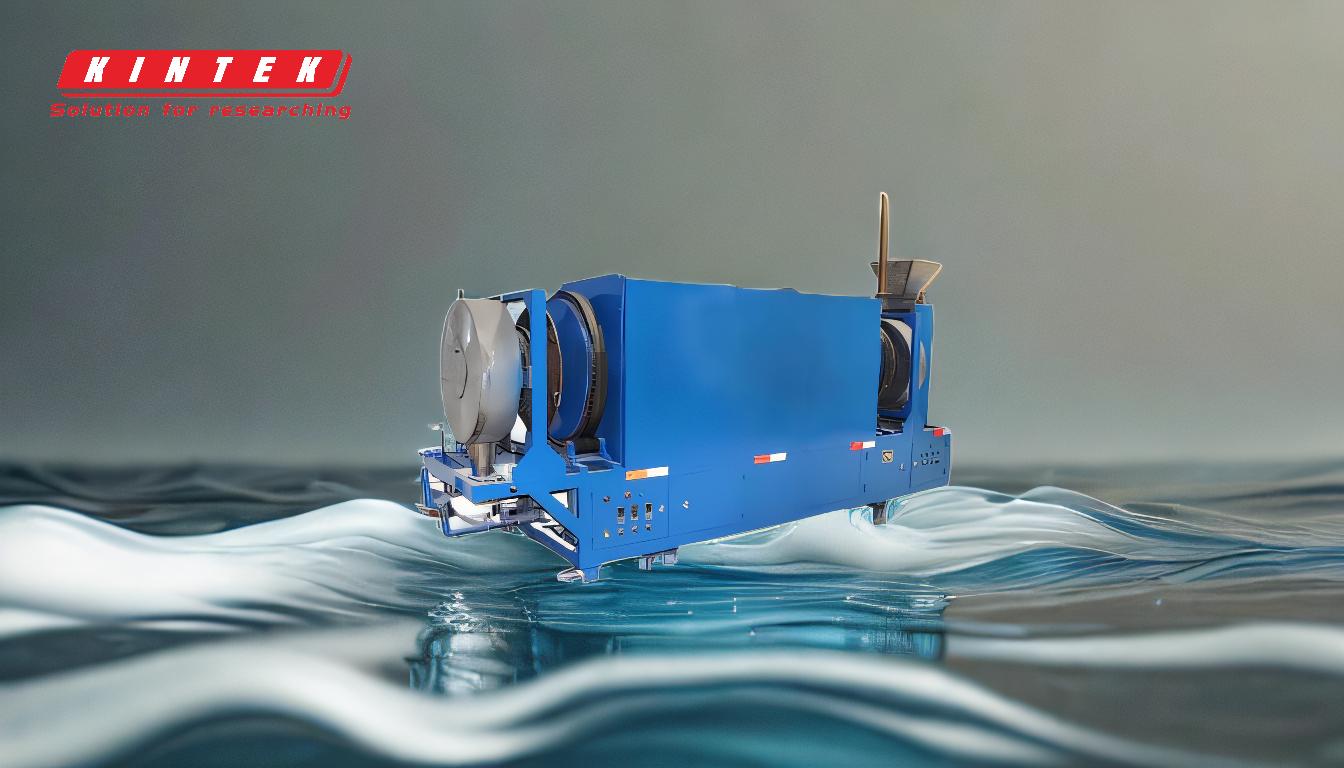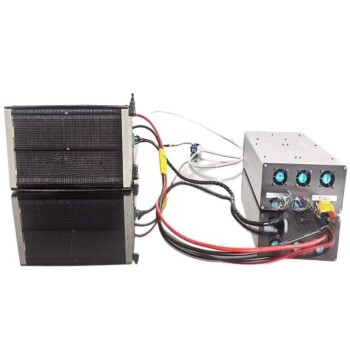Pyrolysis is a thermochemical process that converts waste materials into energy-rich products like syngas, bio-oil, and char. The process involves several stages, including waste preparation, thermal decomposition in a low-oxygen environment, and the separation and refinement of byproducts. Pyrolysis is particularly effective for organic waste, plastics, and biomass, producing valuable fuels and reducing landfill dependency. The process requires careful control of temperature, oxygen levels, and feedstock preparation to maximize energy recovery and minimize environmental impact.
Key Points Explained:
1. Waste Preparation and Pre-Treatment
- Mechanical Separation: The first step involves separating non-organic materials like glass, metals, and inert substances from the waste stream. This ensures that only suitable materials are fed into the pyrolysis reactor.
- Drying and Crushing: Organic waste, plastics, or biomass are dried to remove moisture and crushed into smaller particles. This increases the efficiency of the pyrolysis process by ensuring uniform heating.
- Impurity Removal: For plastic waste, pre-treatment includes removing contaminants like dirt or adhesives, followed by grinding the material into smaller pieces for optimal processing.
2. Pyrolysis Reactor and Thermal Decomposition
- Reactor Types: Pyrolysis reactors include rotary kilns, rotary hearth furnaces, and fluidized bed furnaces. These are designed to handle different types of waste and operate at high temperatures (typically 200–900°C).
- Low-Oxygen Environment: The process occurs in a non-reactive atmosphere with minimal oxygen to prevent combustion. This ensures the waste decomposes thermally rather than burning.
- External Heat Source: An external heat source is required to maintain the high temperatures needed for pyrolysis. This can be supplied by burning a portion of the syngas or other fuels.
3. Product Formation
- Syngas Production: The thermal decomposition of organic materials produces syngas, a mixture of combustible gases like hydrogen, methane, and carbon monoxide. This gas can be used directly as a fuel or further refined.
- Bio-Oil and Char: The process also yields bio-oil (a liquid fuel) and char (a solid residue). Bio-oil can be used as a fuel or refined into higher-value products, while char can serve as a solid fuel or soil amendment.
- Condensation and Separation: Vapors from the pyrolysis process are condensed into liquid oil, while non-condensable gases are recycled back into the combustion chamber to sustain the process.
4. Cooling and Refinement
- Cooling Systems: The high-temperature oil, gas, and water vapor produced during pyrolysis are cooled using condensers or quenching systems. This separates the liquid products from the gases.
- Gas Purification: The combustible gas is purified to remove impurities and harmful substances, making it suitable for use as fuel.
- Liquid Storage: The condensed bio-oil is transported to storage tanks for further refinement or direct use.
5. Environmental and Energy Considerations
- Flue Gas Treatment: The flue gas generated during pyrolysis is treated using purification systems to reduce harmful emissions before being discharged into the atmosphere.
- Energy Efficiency: The process is designed to recycle non-condensable gases back into the combustion chamber, improving overall energy efficiency and reducing the need for external fuel sources.
- Waste Reduction: Pyrolysis significantly reduces the volume of waste sent to landfills and converts it into valuable energy products, contributing to a circular economy.
6. Applications of Pyrolysis Products
- Syngas: Used as a fuel for electricity generation, heating, or as a feedstock for chemical production.
- Bio-Oil: Can be refined into transportation fuels or used directly in industrial boilers.
- Char: Used as a solid fuel, soil amendment, or in the production of activated carbon.
7. Advantages of Pyrolysis
- Versatility: Pyrolysis can process a wide range of waste materials, including plastics, rubber, biomass, and municipal waste.
- Resource Recovery: Converts waste into valuable energy products, reducing reliance on fossil fuels.
- Environmental Benefits: Reduces landfill use and greenhouse gas emissions by diverting waste from traditional disposal methods.
By following these steps, pyrolysis offers a sustainable and efficient method for converting waste into energy, addressing both waste management and energy production challenges.
Summary Table:
| Stage | Key Activities |
|---|---|
| Waste Preparation | Mechanical separation, drying, crushing, and impurity removal. |
| Thermal Decomposition | Pyrolysis reactor operation in a low-oxygen environment with external heat. |
| Product Formation | Syngas, bio-oil, and char production; condensation and separation of byproducts. |
| Cooling and Refinement | Cooling systems, gas purification, and liquid storage. |
| Environmental Considerations | Flue gas treatment, energy efficiency, and waste reduction. |
| Applications | Syngas for energy, bio-oil for fuel, and char for soil amendment or fuel. |
| Advantages | Versatility, resource recovery, and environmental benefits. |
Discover how pyrolysis can revolutionize waste management and energy production—contact us today for expert guidance!










